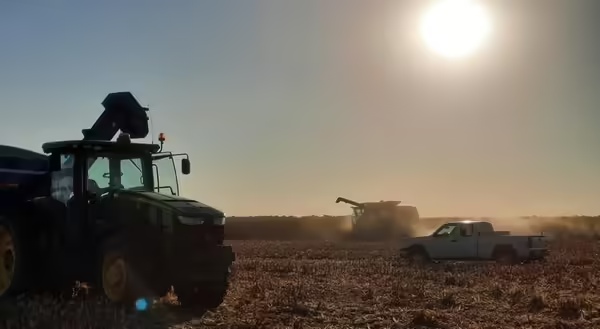
A flexible cash lease is an alternative to a straight cash lease. The flexible cash leash protects the farmer and landowner from economic loss. This type of lease can prevent a farmer from committing to a lease that requires a high guaranteed rent payment, allowing the landowner to have a higher return should profits increase during the production year. Both landowners and farm operators should consult a legal advisor before entering any lease agreement.
A flex-type lease sets a base rent based on known conditions. The farmer and the landowner are aware of the yield history based on records, such as reported yields for crop insurance purposes. They also know the current price for corn to be delivered at the local elevator in the fall of the upcoming growing season when the lease is signed. The USDA also projects anticipated crop prices. If yields and/or prices increase based on actual yields and prices, the rent, in the form of a bonus, also increases. The rent remains at the base level if the revenue doesn't increase or decrease.
Flex cash leases are nearly as popular as straight cash leases. The purpose of the flex rent is to protect the farmer from having to pay for an aggressive straight cash rent while allowing the landowner to have higher returns should the economic situation improve. In 2026, landowners are feeling pressure to lower cash rent levels in anticipation of financial loss to the farmer, and a flexible lease helps to diminish this pressure.
Flex Leases Based on Actual Revenue
The contracting parties determine the base rent amount per acre by multiplying the anticipated price for the growing season by the yield from historical on-farm data. For yields, the trend-adjusted yield from Federal Crop Insurance records, if available, can be used in the formula. The fall delivery price at the local elevator is a practical option for the base rent formula. Farmers can make grain sales before, during, and after harvest.
Average Yield x Yield Price = Gross Revenue
The landowner and the farmer then agree on a percentage of the gross revenue that the farmer will pay to the landowner as rent. For corn, the rate is typically between 30% and 38%, with 35-36% being the most common. For soybeans, the percentage ranges typically from 36% to 44%, with 40-42% being the most common. The percentage is set at a mutually agreed-upon rate. The grain price used in the formula is for fall delivery, even though the upcoming year's crop has not yet been planted or harvested to determine the initial base price.
Example of setting the Base Rent for corn:
At the time of contract negotiations, the fall delivery price at the local elevator is $4.00 per bushel. The average Yield is 250 bushels per acre.
- Gross Revenue = $4.00 x 250 bushels, which is $1,000 in anticipated gross Revenue. If the negotiated rent percentage of gross income is 35%, then the base rent is $350 per acre.
- If, at harvest, the actual yield is bushels per acre and the determined average price for the year is $4.20, the Revenue increases to $ 1,092 per acre. Using the formula used to determine the base rent, the landowner portion calculations are as follows:
- 260 bushels x $4.20 x 35% = $382.20 per acre.
- Next, subtract the base rent of $350.
- $382.20 per acre, minus the base rent of $350, equates to a bonus rent paid by the farmer of $32.20 per acre.
Soybean flex leases are calculated using the same basic formula. The percentage negotiated for the lease of soybeans is typically slightly higher than that for corn, due to lower input costs for growing the crop (36 to 44%).
How do I determine the Average Grain Price for the Growing Season?
One popular method is to select a specific day of each month from January through October, obtain the closing price at the local elevator for that day, and then average them together. Using grain price averages throughout the growing season allows one to average their grain prices rather than relying on a single low or high price. Many farmers use marketing contracts that average yearly prices and/or make grain sales on specific dates.
What if the Calculated Revenue is Less Than the Base Rent at the End of the Season?
If the computed revenue is less than the base rent, then the rent will not change. Farms can, and many do, carry federal crop insurance to cover revenue loss should the economic situation deteriorate throughout the year, based on lower prices and/or yields.
Flexible Cash Leases are nearly as popular as straight cash farm leases. Landowners and farmers should consider a Flexible Cash Lease to accommodate changing prices and yields during the growing season, which allows farmers to minimize some risk and for landowners to capture higher profits.
For information on a straight cash lease, please review: https://extension.illinois.edu/blogs/farm-coach/2025-09-30-determining-cash-rent-illinois-farmland.